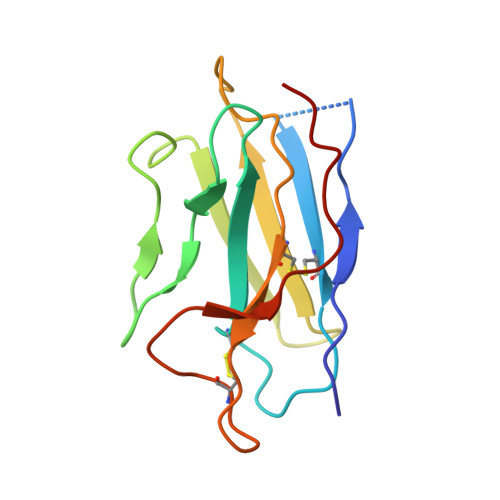Cryo-EM structure of antibacterial efflux transporter QacA from Staphylococcus aureus reveals a novel extracellular loop with allosteric role.
Majumder, P., Ahmed, S., Ahuja, P., Athreya, A., Ranjan, R., Penmatsa, A.(2023) EMBO J 42: e113418-e113418
- PubMed: 37458117
- DOI: https://doi.org/10.15252/embj.2023113418
- Primary Citation of Related Structures:
7Y58 - PubMed Abstract:
Efflux of antibacterial compounds is a major mechanism for developing antimicrobial resistance. In the Gram-positive pathogen Staphylococcus aureus, QacA, a 14 transmembrane helix containing major facilitator superfamily antiporter, mediates proton-coupled efflux of mono and divalent cationic antibacterial compounds. In this study, we report the cryo-EM structure of QacA, with a single mutation D411N that improves homogeneity and retains efflux activity against divalent cationic compounds like dequalinium and chlorhexidine. The structure of substrate-free QacA, complexed to two single-domain camelid antibodies, was elucidated to a resolution of 3.6 Å. The structure displays an outward-open conformation with an extracellular helical hairpin loop (EL7) between transmembrane helices 13 and 14, which is conserved in a subset of DHA2 transporters. Removal of the EL7 hairpin loop or disrupting the interface formed between EL7 and EL1 compromises efflux activity. Chimeric constructs of QacA with a helical hairpin and EL1 grafted from other DHA2 members, LfrA and SmvA, restore activity in the EL7 deleted QacA revealing the allosteric and vital role of EL7 hairpin in antibacterial efflux in QacA and related members.
- Molecular Biophysics Unit, Indian Institute of Science, Bangalore, India.
Organizational Affiliation:


















